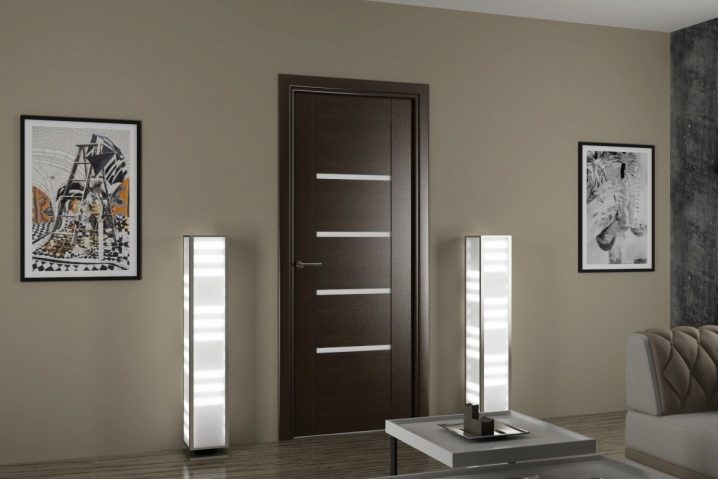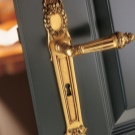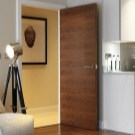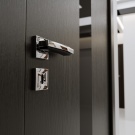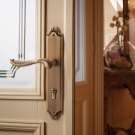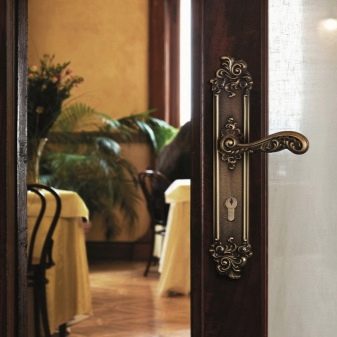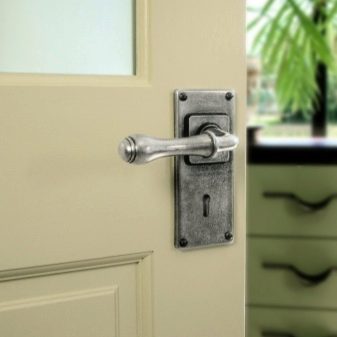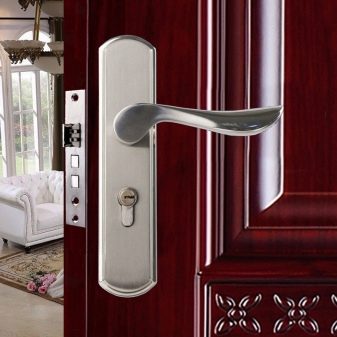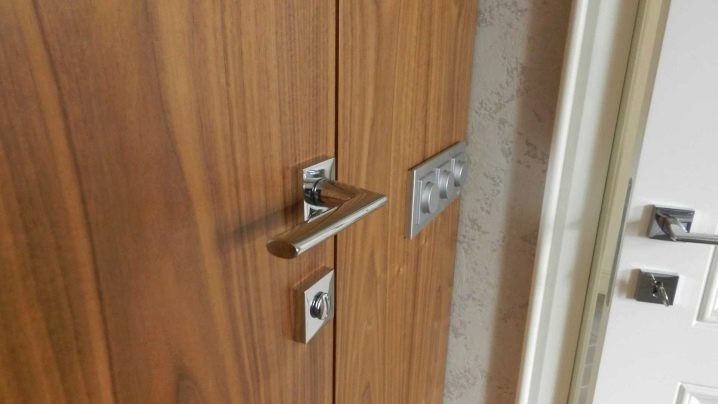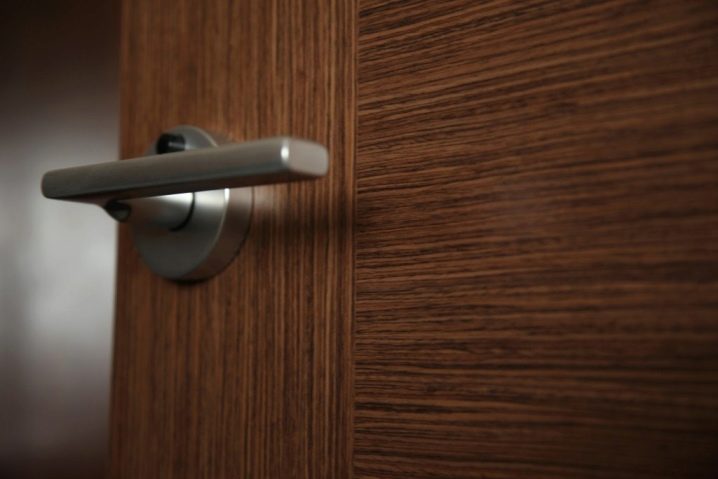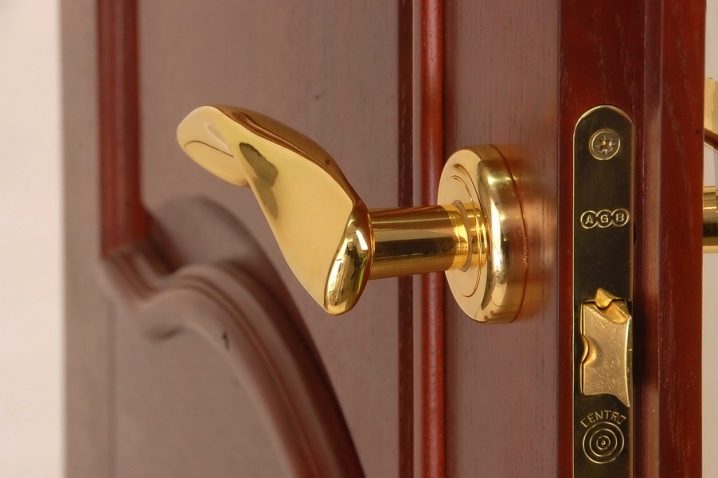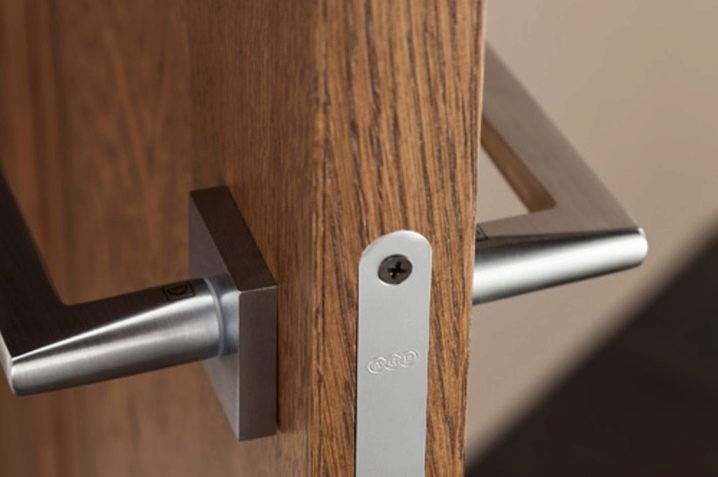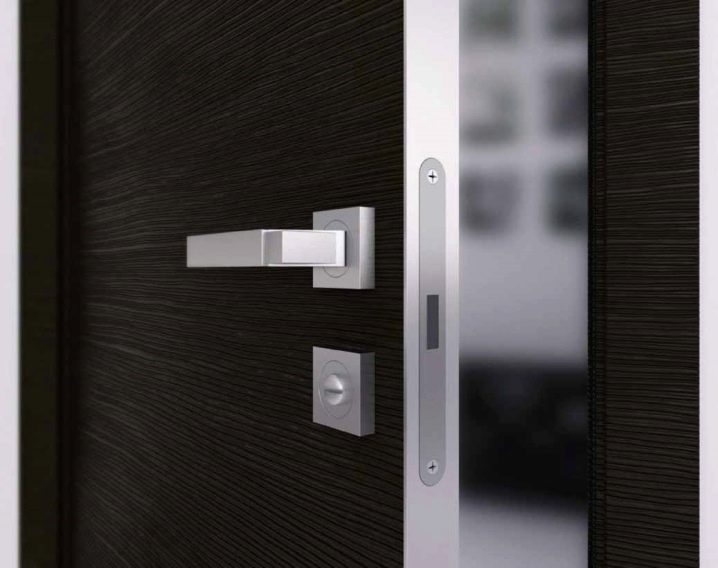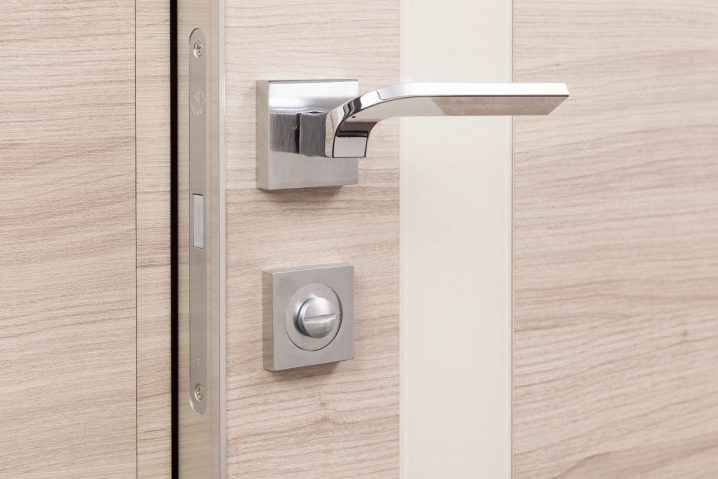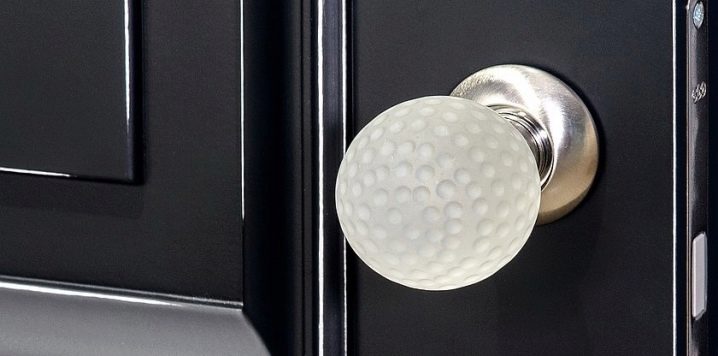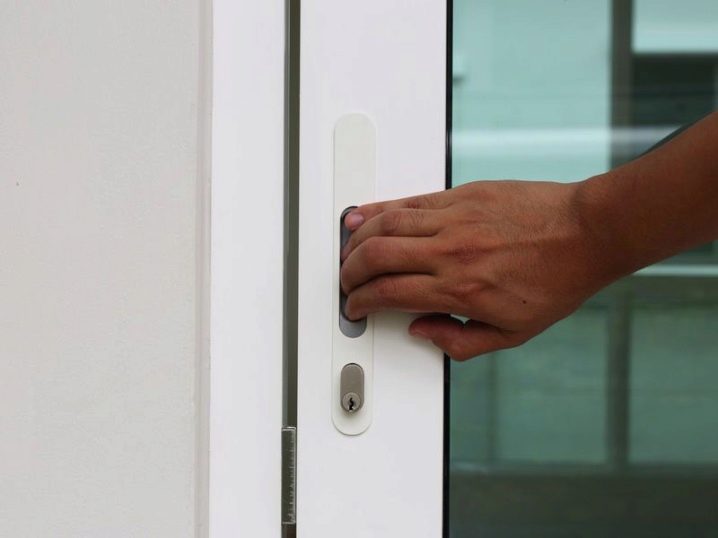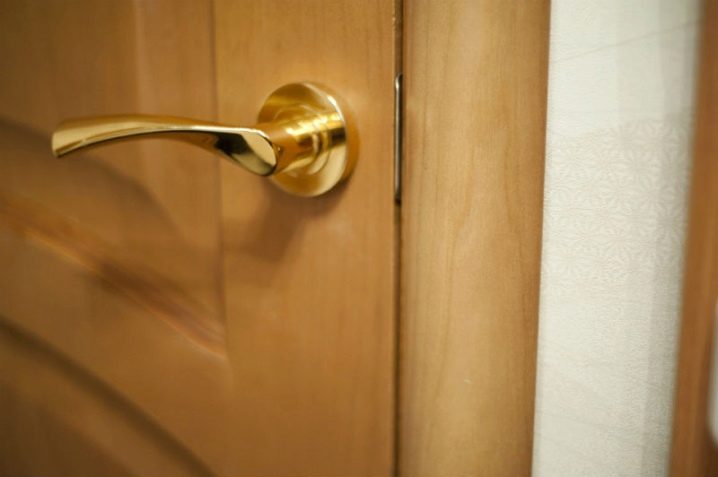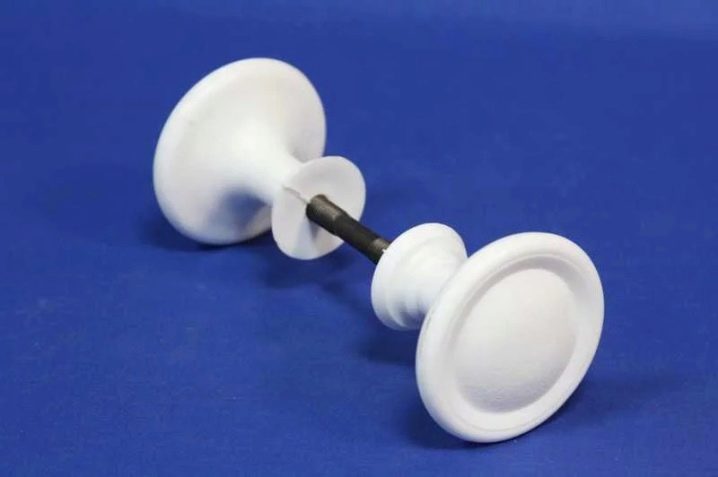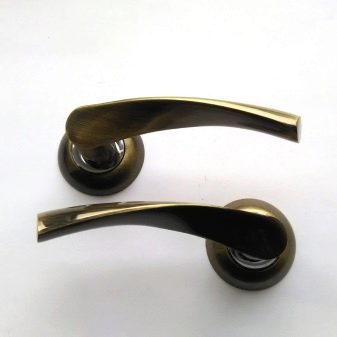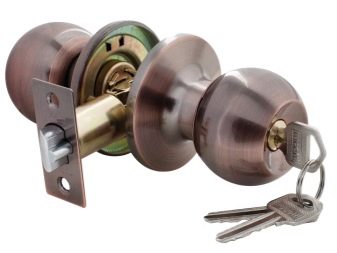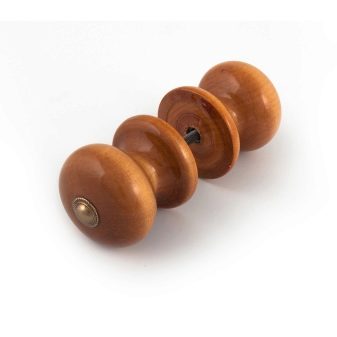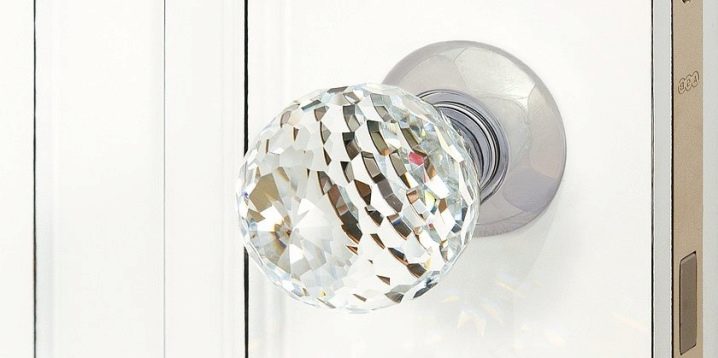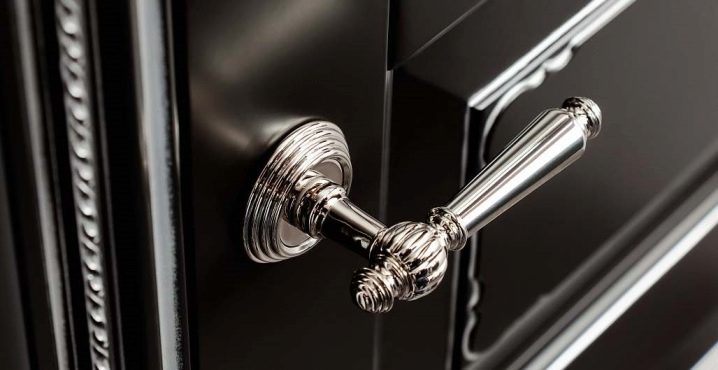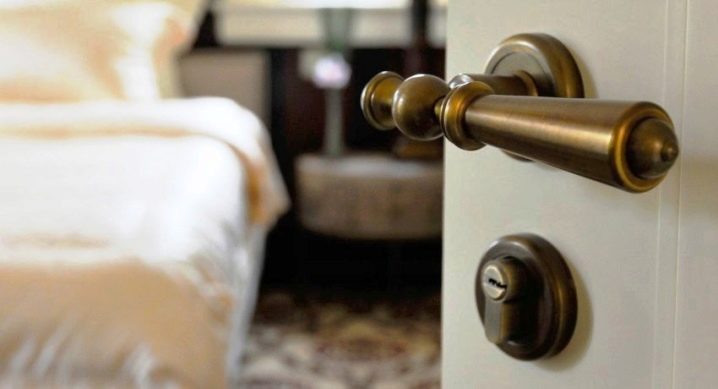Features door handles with locks for interior doors
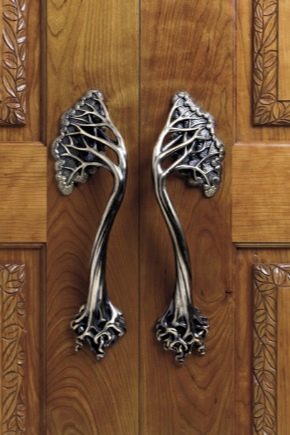
Door handles with locks are an integral element of fittings and are actively used for installation in interior doors. Models are characterized by simplicity of design, usability and wide consumer availability.
Special features
Handles, equipped with a locking mechanism, appeared in the second of the last century and were immediately appreciated. Scope of pens is quite wide. Models have found their use in homes, public spaces, offices and in manufacturing. Initially, handles with a lock were installed as a cabinet option in clinics, kindergartens, schools and universities.That is, in protected buildings, where the restriction of access to a room is more likely a warning.
Such models were not used as the main locking device. This is due to the low break resistance of the products, as well as minimal protective properties. Today, handles with a locking mechanism can be seen not only in public spaces: they are often installed on interior doors in apartments, bathrooms and sanitary facilities. Installation of handles with a locking mechanism is made by inserting the device into the door leaf and requires certain skills.
Varieties and their device
Door handles, equipped with a locking mechanism, are classified according to several criteria, the most important of which is the type of construction.
Push models
This type of device is the most proven and reliable. Structurally, the push handle consists of a square rod passing through the door leaf and the latch, locking springs that secure the rod, locking the core, the locking bolt and handles. On the back of the rod is equipped with a locking washer, thanks to which with the help of two bolts both handles are attracted to each other and fit snugly to the canvas.
The design feature of the push handles with locking mechanism is the presence of a lockwhich fixes the rod with a steel hook. The lock is activated by means of a valve or a button, by pressing or turning which to open the lock without using a key from the back side will fail. Valve locking is usually located on the opposite end of the rod relative to the keyhole. Push-button locks can be placed below the locking mechanism and latches and be directly under the thumbturn.
The principle of the operation of the pressure knobs is quite simple: while pressing the handle by means of transfer plates, the latch latch, presented in the form of a lock tongue or, as they say in the common people, “doggie”, operates. She goes inside the locking mechanism and allows you to freely open the door. When closing, the beveled edge of the tongue smoothly enters the groove and, thanks to the spring mechanism, returns to its original position. Push models are available in two versions.
The first type is represented by products with separate functions of a latch and a lock.which are installed separately and each have their own decorative trim or socket. In the models of the second type, both devices are located under one lining and are mounted as a single unit. The advantages of pressure devices include high reliability of the latch and locking mechanism, low cost and a huge range with a large variety of colors and designs. Among the downsides can be noted the loud triggering of the metal "dog", which somewhat limits their use in children's rooms and bedrooms, as well as the rapid wear of the spring mechanism.
Magnetic models
These are locking devices of a new generation; they lock the door leaf according to the principle similar to the principle of operation of magnetic latches on dress cabinets. Structurally, such products consist of two permanent magnets, one of which is placed in the recess of the doorframe mounting plate, and the second, made in the form of a movable bolt, is located inside the lock mechanism box.
The principle of operation of the magnetic lock is as follows: when closing the door, a fixed magnet mounted in the box attracts and securely holds the second one located in the door leaf. When pressing on the handle, the magnets disengage and the door opens.
The advantages of magnetic models include simplicity of design, including the absence of a spring mechanism. In such models, in principle, there is nothing to break, which greatly increases the reliability and durability of devices. In addition, the lack of a "dog" allows you to completely hide the mechanism in the door leaf, making the process of opening and closing the door completely silent. Magnets for interior locks are made from stabilized ferrite. Due to this, magnetic devices are able to serve for more than a decade without the risk of loss of basic operational qualities. In addition, most magnetic locks are made in the same sizes as mechanical models.
This greatly facilitates the installation and allows you to independently replace the mechanical model with a magnetic one. Usually the product is installed in existing niches or grooves and fixed with fasteners. However, along with a large number of clear advantages, magnetic locks have some drawbacks. For example, designs are often non-separable, and to make adjustments to the operation of a magnet, you have to completely remove the lock, destroying the door leaf.In addition, due to the specific properties of the magnet, a constant magnetic field is formed within a radius of 30-50 cm from the lock, which can attract electrified particles, pins and needles to itself.
There is also a high probability of slamming the door ajar, which is fraught with unpleasant consequences. The slamming is due to the fact that the operation of the magnetic device begins when the magnets are located 15 cm apart from each other. The mechanism in this case functions on the principle of a closer, slowly pulling in and then slamming the door with force. However, this problem is completely solved by the method of tapping the lock of the reverse action. The essence of such a device is the use of opposite pole magnets, which are not attracted to each other, but, on the contrary, repel each other.
To close the door, lower the handle: when turning it, the magnetic bolt will be pushed in, the stem will freely enter the cavity of the strike plate and will be unloaded until the door remains in the closed position. As you can see, the effect of the closer in such devices is completely absent, so you will need not worry about spontaneous slamming of the door.
The negative aspects of the use of magnetic locks can be attributed to their low ability to withstand shock loads and crack even with minor impacts.
Knob knobs
Unlike push models, the “dog” control in such devices occurs with a rounded knob, capable of turning around its axis. The most common place to install knobs are shower rooms and home sanitary facilities. However, in such premises use handles, equipped only with a latch and a lock. The locking cylinder and the borehole are missing, since at home they are not necessary. Another thing - office space. In them knobs with locks are often installed both on toilets, when they want to restrict the entrance of unauthorized persons, and on the offices.
Installing the knob allows you to close the inside of the room, and if necessary, lock the latch or latch. As a result, only a limited circle of people who have keys to the lock device can enter the room. The advantages of knob include very simple installation and low cost of products.
Among the minuses note the low burglary and the inability to open the door with busy hands.And if in such cases it is enough to press the push handle with an elbow, then to open the spherical device, it is necessary to carry out a full turning of the knob.
Sliding door handles
In terms of their design and appearance, such options are very different from previous models. A characteristic feature of such devices is their location on the door leafs: the products are completely recessed into their surface, so that compartment doors can easily hide in the door niches. Such handles are also often equipped with a locking mechanism that ensures reliable locking by means of a latch. Such structures can be closed only on one side, because of which the scope of their use is rather limited.
Materials
Handles designed for interior doors do not need to use extra strong materials, as required by models for entrance groups. These products are not subject to increased requirements for burglary and security, so more attention is paid to the decorative component. In the manufacture of pens often use a combination of several materials, which allows you to create interesting images and significantly revitalize the interior.The main materials for the production of door handles are metal, plastic, wood and glass.
Plastic products are widely used for installation on interior doors with low traffic. These can be archives, book storages and other premises that do not involve intensive movement of people. The advantages of the models include low cost and a large range of design and colors. The disadvantages are the short life and the rustic look of plastic structures.
Metal is most commonly used to make pens. The most durable and durable steel models are considered. They are distinguished by the reliability of the locking mechanism and are designed for installation on doors located in busy places. In addition, the steel surface is often chrome plated or brassised, which gives the products a beautiful and modern appearance. Steel handles are highly resistant to corrosion and can be installed in rooms with high humidity. The disadvantages of steel products are high cost and high weight.
Products made of copper alloys and aluminum are also highly durable and can last 5-8 years. However, when purchasing them, you should make sure that the product does not turn out to be hollow, since such a design, despite its low cost, is not a good solution for such devices. From above, alloys are often covered with gold, silver and bronze paint, due to which they begin to look rather rich and noble. The disadvantage of metal coated pens is the low wear resistance of the decorative coating, which is why the paint is quickly erased, and the products lose their original gloss.
Wood differs in naturalness and natural appearance, it is mainly used for the production of push models. The advantages of the models are ecological harmlessness and pleasant to the touch material, and the disadvantages include the impossibility of using them in wet rooms and the high cost of some models.
Glass is used to make knob knobs. Such models are distinguished by a stylish and aesthetic appearance, as well as a long service life with careful handling. The disadvantages are low resistance to shock loads and the need for regular maintenance of products.
Recommendations for selection
The main condition for a successful purchase is the correct choice of the type of control of the locking device and the latch. When choosing between knob, pressure device and magnet, first of all it is necessary to focus on the size and weight of the door leaf. So, for light MDF doors, an aluminum or plastic handle-knob is quite suitable, while for heavy canvases made of natural wood, or simply too large doors, it is better to install a pressure or magnetic mechanism.
The next step in the selection should be an assessment of the quality of the purchased model. First of all, one should pay attention to the correct operation of the fixation mechanism: it should not hang out, and the latch should not jam. For models with spraying, it is necessary to look at the uniformity of staining, and on chrome-plated products ensure that there are no scratches and chips.
Competent choice and careful operation will significantly prolong the service life of the locking device and make use of the handle convenient and comfortable.
For information on how to install doorknobs in internals with your own hands, see the following video.
